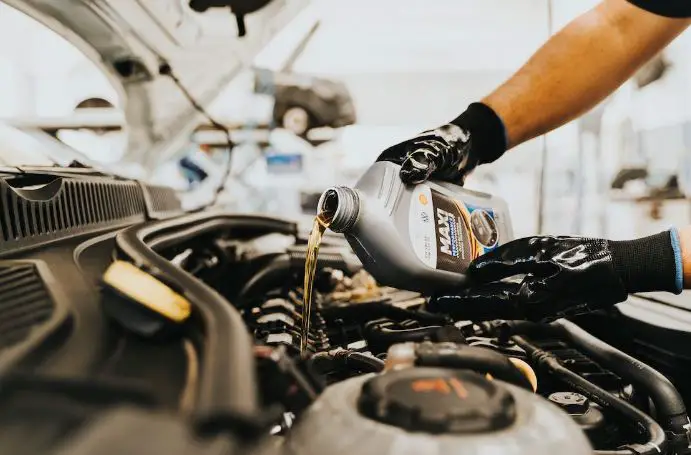If you know a bit of something about cars, then you’ll likely be familiar with the term “strut” and know that it refers to a kind of shock absorber commonly used in cars and other vehicles. The larger term “strut mount” might be a bit less familiar, however, which is why we’ve prepared today’s blog as a way to enlighten people as to what strut mounts are, what function they serve and also some signs that show your strut mounts might be in trouble.
Background: What is a Strut Mount? What Does it Do?
The strut mount is a critical component within your suspension system. It connects the suspension strut to the vehicle, and also has a damping effect, insulating the tire noise and other noisy vibrations that you get, stopping it from invading the passenger cabin. Strut mounts also house a special bearing that works as a steering pivot in a car. As you can see, therefore, they are quite a “busy” and structurally essential component that your suspension system couldn’t do without.
It’s set up in your car’s suspension a bit like a sandwich. There’s one side of the strut mount that’s bolted to your vehicle, while the other side is bolted to the strut. The center features the insulating material which has the consistency and texture of rubber. The mount does its job by cushioning the various impacts that come its way, reducing any jarring, as well as the by-products of noise and vibration.
How Do Good Strut Mounts Go Bad?
Among your car’s many moving and interconnected parts, the strut mount is arguably among the most durable. It is extremely low-maintenance and barely needs any attention until the time comes to have it replaced (see below for more on that). The first way in which strut mounts go bad is simply the effects of time and the cushioning of many, many impacts. Durable as it is, its job is to endure wear and tear, and soon or later the party ends.
Besides regular wear and tear multiple encounters with potholes, bumps or the curb will also work to shorten the life of your strut mounts. They’re durable but they weren’t designed to be ridden hard through or into these obstacles on a daily basis. Furthermore, the local environment can also take its toll, especially temperature extremes, and also the effects of salt corrosion and salt in the air in coastal locations.
Since there is more than one way to damage a strut mount, the more important thing for car owners is to be familiar with the warning signs that the strut mounts are in trouble and in need of a mechanic’s attention. We’ll deal with that in the next section.
Signs that Your Strut Mount Needs a Mechanic’s Attention
Listen and pay attention to the following things that could indicate that you need replacement strut mounts.
- Knocking Sounds
When you’re driving over any bumps — even deliberate ones like speed bumps — do you hear any knocking sounds coming from under your car? Specifically, it would be coming either from around the front or rear tires. If you hear and thudding, knocking or clunking noises when you drive over a bump or other uneven surface, then that could be a signal that your strut mounts are broken or overly worn.
- Vicious Vibes
Have you noticed a significant change in the ride quality you’re experiencing in your vehicle? When it was new, you might have felt like you were floating, but now you can feel every minor bump in the road and the vibrations are going straight to your bones and teeth. No modern car is designed to make you feel vibrations that keenly. If you are experiencing it, it could be because your strut mounts — or possibly other suspension components — are in need of repair.
- Poor Alignment
As you’re driving along, do you find yourself forcing the car to remain centered and driving in a straight line? Is there an occasional pull to the left or right? If you’re sensing this, your tire alignment is off kilter, which is a big-enough problem in and of itself. It’s definitely not safe to drive with poor alignment. But it’s also one of the symptoms of damaged or overly worn strut mounts. You should have the entire thing checked to be sure.
- Uneven Tire Wear
With strut mounts and the surrounding suspension system working normally, your tires should wear evenly provided you rotate them at the right times as well. If you’re seeing one tire in particular wearing faster, then it could be because of a worn strut mount in need of replacement. It’s quite possible for one to start to worsen faster than others.
- Steering Problems
We mentioned further above that the strut mount was connected to the steering mechanism via a bearing. This means that steering issues are another key sign that the strut mount could be in trouble. The steering might feel very stiff, or even too loose. There may also be squeaking, grinding or vibrating when you steer the car. Any and all of these are bad signs, whatever the real cause, strut mount or not, and should be checked as soon as possible.
- It’s Moving too Much
One check you can do on the car yourself is to pop the hood open, locate where the strut mount is and then press down on the car. As you push down, observe the movement of the strut mount (if any). It should move just a little, but if there is a lot of easily noticeable movement, then something isn’t right. The advantage of this check is that you can observe it while the car is parked. Observing the other signs on the road can be a bit scary.
- Worn Rubber
When the rubber parts on the inside of the mount are looking worn, dried out, or cracked, then that’s another visible sign of wear and tear that should signal a replacement. This is also something you can easily check for yourself, as is the next and final sign.
- Corrosion
If when you inspect the strut mount you notice any presence of rust, then it’s time for a replacement. Rust is the ultimate sign of metal reaching the end of its life, and on something like a strut mount also represents a safety issue since rust takes away the structural integrity of the strut mount.
When Should Strut Mounts Be Replaced?
If any of the above signs turn out to be related to the strut mounts, then that would be a good time to get a replacement, but what kind of timeframe should you expect it to happen in? That’s an important question. When a strut mount is properly installed and hasn’t been subject to the kinds of pothole and curb encounters we described further above, then there’s no reason it shouldn’t last for 10 years or more. Only unexpected impacts or constant subjection to weather and temperature extremes could meaningfully shorten that lifespan.
How Much is a Strut Mount Replacement
You should expect to pay up to $250 in parts and labor for a strut mount replacement, which is quite good value for a part that will last up to 10 years. At the low end, you might be able to find a mechanic who will do it for $120-150. A budget of at least $200 for this work would be reasonable.









